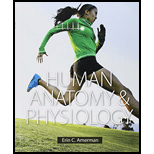
To review:
The given blank space in the statement “At the end of meiosis, each cell has ____________ chromosome and they are genetically __________ from the original cell.”
Introduction:
Cell division is an important part of the cell’s life cycle. It consists of two parts, namely, cell divisionand interphase. Interphase is the time period between two cell divisions; it is a phase of intense
Explanation of Solution
Meiosis is a type of division that results in the halving of genetic material. It is also known as reduction division. It takes place in the reproductive cells known as gametes. The female gamete cells are known as ovum or egg cells. The male gamete cells are known as sperms.
During meiosis I, the separation of the homologous chromosomes takes place. After meiosis I, two daughter cells are formed, each having one chromosome from the pair of chromosomes. During meiosis II, the sister chromatids get separated, and the four daughter cells that are formed have half the number of chromosomes. At the end of meiosis, each cell has 23 chromosomes and are genetically different because of crossing over and independent assortment.
At the end of meiosis, each cell has 23 chromosomes and they are genetically different from the original cell.
Want to see more full solutions like this?
Chapter 26 Solutions
Human Anatomy & Physiology, Modified Mastering A&P with eText and Value Pack Access Card and Practicing A&P Workbook for Human Anatomy & Physiology